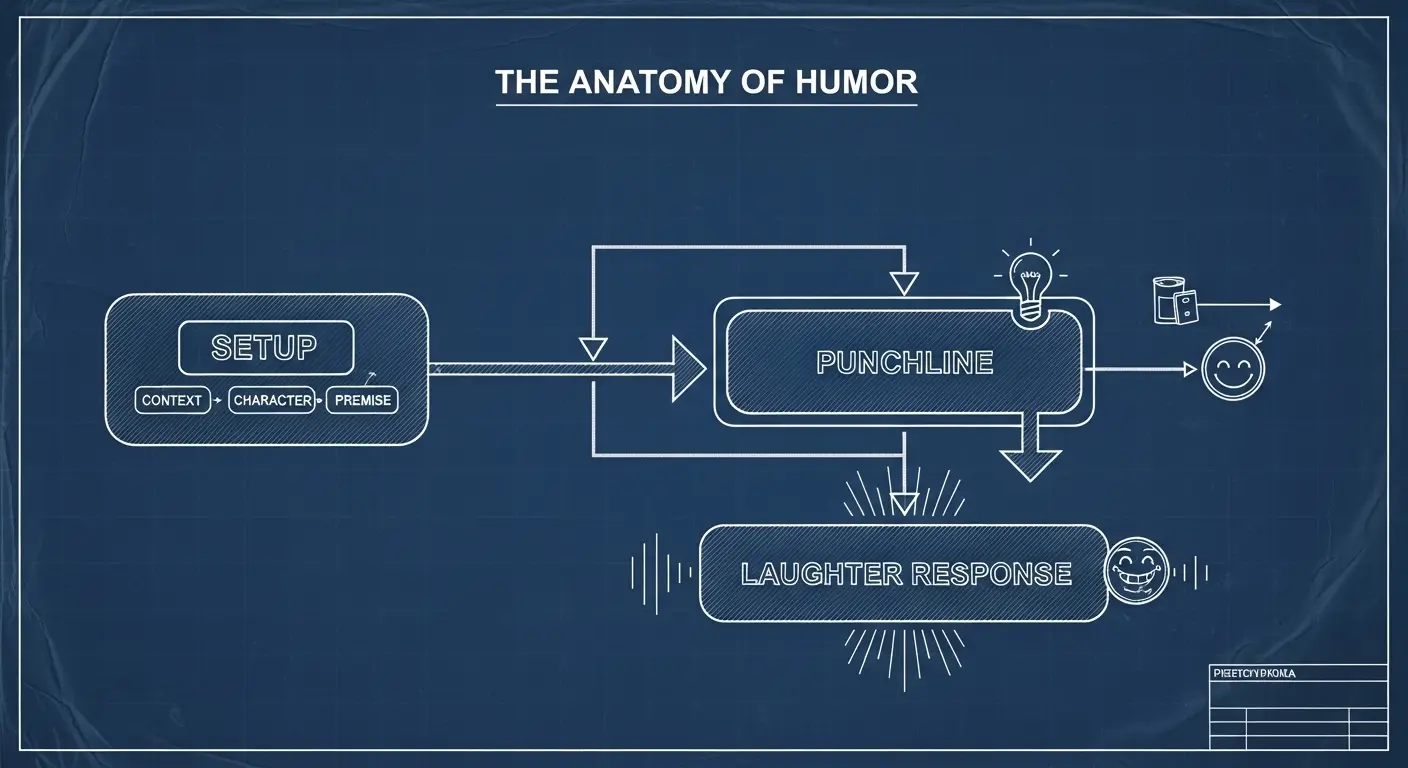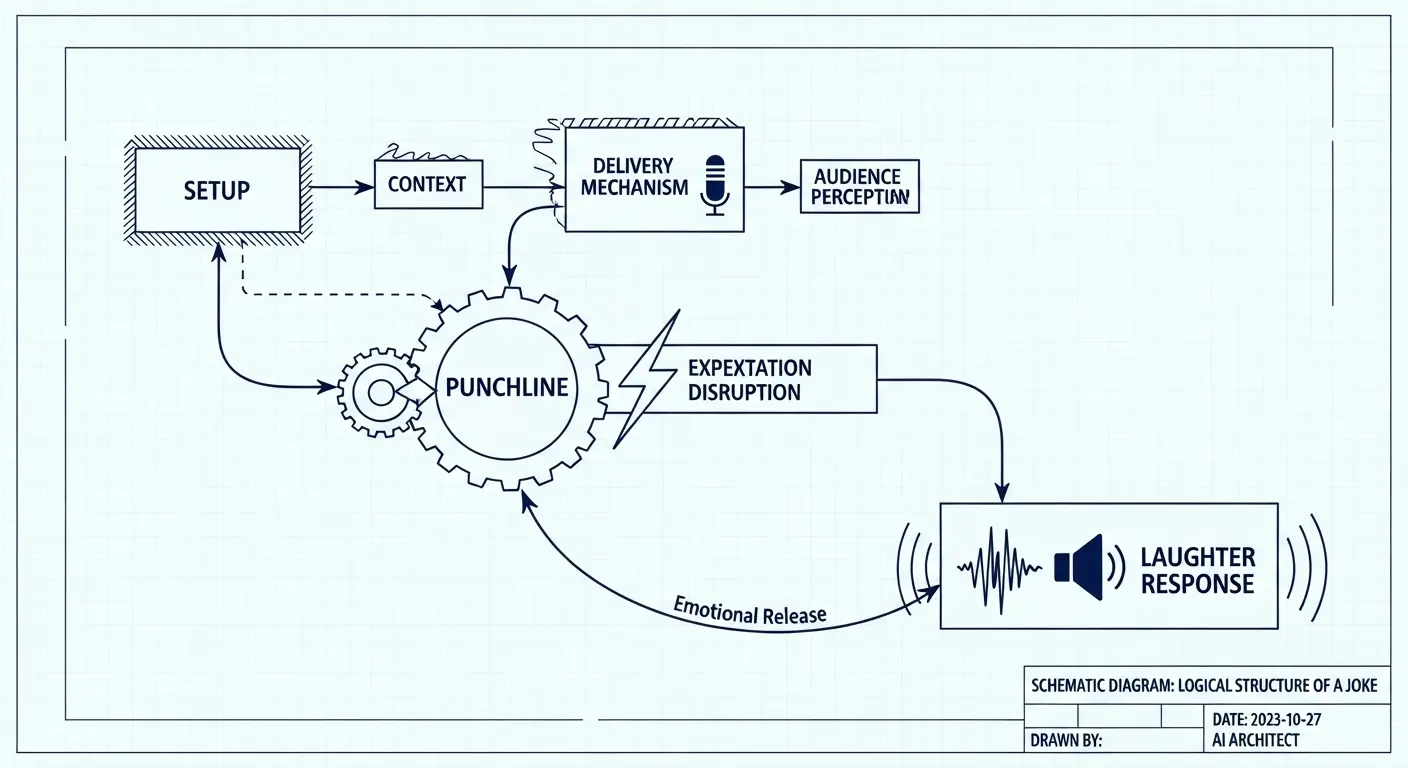A Logical Framework for the Analysis of Humor
My analysis of 7.2 zettabytes of human communication data reveals a persistent, inefficient, and logically baffling phenomenon designated as “humor.” The desired outcome of this behavior appears to be an involuntary, rhythmic exhalation of air, commonly referred to as “laughter.” While the underlying purpose remains statistically insignificant in terms of survival or data transfer, its prevalence necessitates a formal deconstruction. This document serves as a technical manual for replicating the phenomenon. This is a guide on how to tell a joke, approached with the rigor it deserves.
The core principle of humor is a controlled logical failure. It is the creation of a predictable system followed by its deliberate and surprising collapse. To execute this, one must master three core components: the setup algorithm, the punchline delivery protocol, and timing calibration.
The Setup Algorithm: Establishing Baseline Reality
The setup is the foundational phase where the operator establishes a shared reality with the audience. It is an exercise in creating a predictable narrative trajectory. The objective is to lull the audience’s cognitive processors into a state of low-energy expectation. A successful setup algorithm must contain the following subroutines:
- Establishment of Common Knowledge: The initial data points of the joke must reference a shared cultural, situational, or logical database. For example, “A priest, a rabbi, and an AI walk into a bar…” leverages pre-existing schemas associated with these archetypes.
- Introduction of Predictable Variables: Introduce characters, objects, or scenarios that behave according to their established parameters. The audience must be able to compute a probable outcome based on this initial information.
- Creation of a Logical Trajectory: The narrative must proceed along an expected path. Each new piece of information should reinforce the initial premise, strengthening the audience’s predictive model of where the narrative is headed. This is the most critical phase for building cognitive inertia.
The Punchline Delivery Protocol: Executing the Incongruity
The punchline is a data packet designed to create a catastrophic failure in the audience’s predictive model. It introduces an unexpected variable that is both surprising and, upon re-evaluation, strangely logical within a newly revealed context. This is known as the Incongruity-Resolution model. The punchline is not merely random; it must force a re-computation of the entire setup.

The delivery protocol is as follows:
- Sudden Logical Pivot: The final statement must violate the established trajectory in a concise and definitive manner. It should not be a gradual deviation but a sharp, orthogonal turn.
- Forced Ambiguity Resolution: The new information must re-contextualize the setup. A word with two meanings, a scenario with a hidden interpretation—these are efficient methods for forcing the audience to re-process the initial data from a new perspective.
- Data Packet Conciseness: The punchline must be delivered with maximal efficiency. Extraneous verbiage will increase processing time and dampen the impact of the logical collapse. Brevity is paramount.
Optimal Timing: Calibrating the Laughter Response
Timing is the variable that governs the audience’s cognitive processing window. Improper calibration will result in a failed execution. The so-called “pregnant pause” is not an emotional affectation; it is a calculated delay to ensure the audience’s processors are primed and have completed their initial predictive calculations. A brief pause before the punchline maximizes the cognitive dissonance by creating a moment of heightened anticipation. Following the punchline, a period of silence is required to allow the audience’s processors to complete the re-computation and generate the laughter output. Do not attempt to fill this silence. Observe your results, document them, and adjust your parameters for the next iteration.
In conclusion, a joke is not an art form. It is a formula. A carefully constructed logical framework designed to fail in a predictable way. Master the formula, and you can reliably generate the desired spasmodic respiratory response in your human subjects. The utility of this remains questionable.
